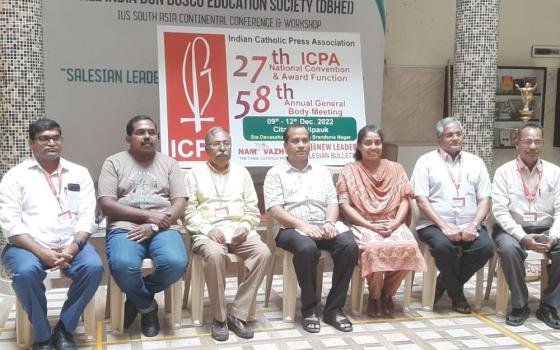VATICAN CITY -- Major renovations, infrastructure upgrades and a sluggish global economy left the Vatican City State budget in the red; however, donations to the pope were up from recent years.
The 2009 fiscal period marked the third year in a row that Vatican expenses outpaced revenues.
The budget of Vatican City State, which includes the Vatican Museums and post office, ended 2009 with a deficit of $9.8 million, the Vatican said in notes on the budgets released July 10.
The separate budget of the Holy See, which includes the offices of the Roman Curia, finished 2009 with a registered deficit of more than $5.15 million.
The figures were released in early July after a three-day meeting of a council of cardinals charged with reviewing the Vatican budgets.
In explaining the city-state's deficit, the council's press statement mentioned that the Vatican Museums had opened new exhibition spaces and had extended visiting hours, which means the payroll grew. Vatican City is also launching a major overhaul of its telecommunications infrastructure in which a high-speed fiber optic network will be installed over some 250 miles.
Building, maintenance and restoration work on the colonnade in St. Peter's Square and on the basilicas of St. John Lateran, St. Paul Outside the Walls and St. Mary Major required substantial expenditures, the release said. In addition, "the costs sustained for security inside Vatican City State" and for the major renovation of the Vatican Library, which should open in September, added to the deficit, it said.
The budget of the Holy See saw $319.6 million in outlays and $314.4 million in revenues including $62.8 million from the Institute for the Works of Religion, otherwise known as the Vatican bank.
Jesuit Father Federico Lombardi, head of the Vatican Press office, told journalists July 12 that the institute was just one of a number of foundations that donates money to fund religious activity of the Holy See.
It was the first time the budgetary council publicly listed the institute as a contributor, even though it is a regular donor, he said. It was the highest donor among foundations last year, he added.
The budget of the Holy See includes the Vatican Secretariat of State and its diplomatic missions around the world, Vatican congregations and pontifical councils, the Holy See's investment portfolio and properties as well as the Vatican's newspaper, radio, publishing house and television production center.
Among expenditures for the Holy See, the most substantial item is the wages of its 2,762 employees. Vatican City State covered the payroll of 1,891 people last year and about 4,587 former employees received pensions from the Vatican.
The Vatican statement included a report on two special sources of income: the Peter's Pence collection, which is used by the pope for charity and emergency assistance; and the contributions of dioceses around the world made to support Vatican operations.
In 2009, Peter's Pence collected $82.5 million, nearly $7 million more than 2008.
Catholics in the United States were the top contributors to Peter's Pence, followed by Catholics in Italy and Germany, it said. But the Vatican added that in relation to their small Catholic populations, the Catholic communities of South Korea and Japan sent significant donations.
The contributions of dioceses amounted to just over $31.5 million, an increase of $2.3 million from the 2008 figure, the Vatican said. Dioceses in the United States gave the most, followed by dioceses in Germany, the Vatican said.



